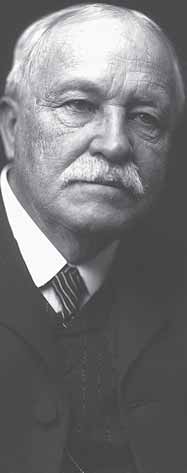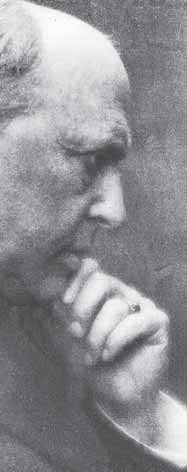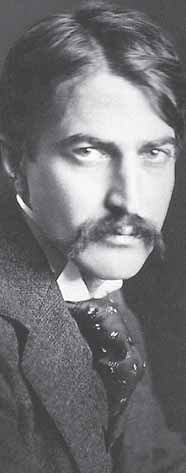apart is their self-conscious and
women writers formed their own
exclusive interest in rendering a
networks of moral support and
given location, and their scrupu-
influence, as their letters show.
lously factual, realistic technique.
Women made up the major audi-
Bret Harte (1836-1902) is remem-
ence for fiction, and many women
bered as the author of adventurous
wrote popular novels, poems, and
stories such as “The Luck of
humorous pieces.
Roaring Camp” and “The Outcasts
All regions of the country cele-
of Poker Flat,” set along the west-
brated themselves in writing influ-
ern mining frontier. As the first
enced by local color. Some of it
great success in the local colorist
included social protest, especially
school, Harte for a brief time was
toward the end of the century,
perhaps the best-known writer in
when social inequality and econom-
America — such was the appeal of
ic hardship were particularly press-
his romantic version of the gun-
ing issues. Racial injustice and
slinging West. Outwardly realistic,
inequality between the sexes ap-
he was one of the first to introduce
SARAH ORNE JEWETT
pear in the works of southern writ-
low-life characters — cunning
ers such as George Washington
gamblers, gaudy prostitutes, and
Cable (1844-1925) and Kate Chopin
uncouth robbers — into serious
(1851-1904), whose powerful nov-
literary works. He got away with this
els set in Cajun/French Louisiana
(as had Charles Dickens in England,
transcend the local color label.
who greatly admired Harte’s work)
Cable’s The Grandissimes (1880)
by showing in the end that these
treats racial injustice with great
seeming derelicts really had hearts
artistry; like Kate Chopin’s daring
of gold.
novel The Awakening (1899), about
Several women writers are re-
a woman’s doomed attempt to find
membered for their fine depictions Photo © The Bettmann Archive her own identity through passion, 50

it was ahead of its time. In
Love, ambition, idealism, and
The Awakening, a young married
temptation motivate his characters;
woman with attractive children and
Howells was acutely aware of the
an indulgent and successful hus-
moral corruption of business ty-
band gives up family, money,
coons during the Gilded Age of the
respectability, and eventually her
1870s. Howells’s The Rise of Silas
life in search of self-realization.
Lapham uses an ironic title to make
Poetic evocations of ocean, birds
this point. Silas Lapham became
(caged and freed), and music
rich by cheating an old business
endow this short novel with unusu-
partner; and his immoral act deeply
al intensity and complexity.
disturbed his family, though for
Often paired with The Awakening
years Lapham could not see that
is the fine story “The Yellow Wall-
he had acted improperly. In the
paper” (1892) by Charlotte Perkins
end, Lapham is morally redeemed,
Gilman (1860-1935). Both works
choosing bankruptcy rather than
were forgotten for a time, but
unethical success. Silas Lapham is,
rediscovered by feminist literary
like Huckleberry Finn, an unsuc-
critics late in the 20th century. In
cess story: Lapham’s business fall
Gilman’s story, a condescending
is his moral rise. Toward the end
doctor drives his wife mad by con-
of his life, Howells, like Twain,
fining her in a room to “cure” her
became increasingly active in polit-
of nervous exhaustion. The impris-
ical causes, defending the rights of
oned wife projects her entrapment
labor union organizers and deplor-
onto the wallpaper, in the design of
ing American colonialism in the
which she sees imprisoned women
Philippines.
creeping behind bars.
COSMOPOLITAN NOVELISTS
MIDWESTERN REALISM
Henry James (1843-1916)
or many years, the editor of
Henry James once wrote that art,
the important Atlantic Monthly
especially literary art, “makes life,
Fmagazine, William Dean Howells
makes interest, makes impor-
(1837-1920) published realistic WILLIAM DEAN HOWELLS tance.” James’s fiction and criti-local color writing by Bret Harte,
cism is the most highly conscious,
Mark Twain, George Washington
sophisticated, and difficult of its
Cable, and others. He was the
era. With Twain, James is generally
champion of realism, and his nov-
ranked as the greatest American
els, such as A Modern Instance
novelist of the second half of the
(1882), The Rise of Silas Lapham
19th century.
(1885), and A Hazard of New
James is noted for his “interna-
Fortunes (1890), carefully inter-
tional theme” — that is, the com-
weave social circumstances with
plex relationships between naïve
the emotions of ordinary middle-
Americans and cosmopolitan Euro-
class Americans.
Photo © The Bettmann Archive peans. What his biographer Leon 51

Edel calls James’s first, or “interna-
love. As James develops, his novels
tional,” phase encompassed such
become more psychological and
works as Transatlantic Sketches
less concerned with external
(travel pieces, 1875), The American
events. In James’s later works, the
(1877), Daisy Miller (1879), and a
most important events are all psy-
masterpiece, The Portrait of a Lady
chological — usually moments of
(1881). In The American, for exam-
intense illumination that show
ple, Christopher Newman, a naïve
characters their previous blind-
but intelligent and idealistic self-
ness. For example, in The Ambassa-
made millionaire industrialist, goes
dors, the idealistic, aging Lambert
to Europe seeking a bride. When
Strether uncovers a secret love
her family rejects him because he
affair and, in doing so, discovers a
lacks an aristocratic background, he
new complexity to his inner life.
has a chance to revenge himself; in
His rigid, upright, morality is hu-
deciding not to, he demonstrates
manized and enlarged as he discov-
his moral superiority.
ers a capacity to accept those who
ames’s second period was
have sinned.
experimental. He exploited
Jnew subject matters — femi-
Edith Wharton (1862-1937)
nism and social reform in The
Like James, Edith Wharton grew
Bostonians (1886) and political
up partly in Europe and eventually
intrigue in The Princess Casa-
made her home there. She was
massima (1885). He also attempted
descended from a wealthy, estab-
to write for the theater, but failed
lished family in New York society
embarrassingly when his play Guy
and saw firsthand the decline of
Domville (1895) was booed on the
this cultivated group and, in her
first night.
view, the rise of boorish, nouveau-
In his third, or “major,” phase
riche business families. This social
James returned to international
transformation is the background
subjects, but treated them with
of many of her novels.
increasing sophistication and psy-
Like James, Wharton contrasts
chological penetration. The com-
HENRY JAMES
Americans and Europeans. The
plex and almost mythical The Wings
core of her concern is the gulf sep-
of the Dove (1902), The Ambassa-
arating social reality and the inner
dors (1903) (which James felt was
self. Often a sensitive character
his best novel), and The Golden
feels trapped by unfeeling char-
Bowl (1904) date from this major
acters or social forces. Edith
period. If the main theme of Twain’s
Wharton had personally experi-
work is appearance and reality,
enced such entrapment, as a young
James’s constant concern is per-
writer suffering a long nervous
ception. In James, only self-aware-
breakdown partly due to the con-
ness and clear perception of others
Photogravure courtesy
flict in roles between writer and
National Portrait Gallery,
yields wisdom and self-sacrificing
Smithsonian Institution
wife.
52

Wharton’s best novels include
The 19th-century American histo-
The House of Mirth (1905), The
rian Henry Adams constructed an
Custom of the Country (1913),
elaborate theory of history involv-
Summer (1917), The Age of In-
ing the idea of the dynamo, or
nocence (1920), and the beautifully
machine force, and entropy, or
crafted novella Ethan Frome (1911).
decay of force. Instead of progress,
Adams sees inevitable decline in
NATURALISM AND
human society.
MUCKRAKING
Stephen Crane, the son of a cler-
harton’s and James’s dis-
gyman, put the loss of God most
sections of hidden sexual
succinctly:
Wand financial motivations at
work in society link them with writ-
A man said to the universe:
ers who seem superficially quite
“Sir, I exist!”
different: Stephen Crane, Jack
“However,” replied the universe,
London, Frank Norris, Theodore
“The fact has not created in me
Dreiser, and Upton Sinclair. Like the
A sense of obligation.”
cosmopolitan novelists, but much
more explicitly, these naturalists
Like Romanticism, naturalism
used realism to relate the individual
first appeared in Europe. It is usu-
to society. Often they exposed
ally traced to the works of Honoré
social problems and were influ-
de Balzac in the 1840s and seen as a
enced by Darwinian thought and the
French literary movement associat-
related philosophical doctrine of
ed with Gustave Flaubert, Edmond
determinism, which views individu-
and Jules Goncourt, Émile Zola, and
als as the helpless pawns of eco-
Guy de Maupassant. It daringly
nomic and social forces beyond
opened up the seamy underside of
their control.
society and such topics as divorce,
Naturalism is essentially a literary
sex, adultery, poverty, and crime.
expression of determinism. Asso-
Naturalism flourished as Ameri-
ciated with bleak, realistic depic-
cans became urbanized and aware
tions of lower-class life, determin-
STEPHEN CRANE
of the importance of large econom-
ism denies religion as a motivating
ic and social forces. By 1890, the
force in the world and instead per-
frontier was declared officially
ceives the universe as a machine.
closed. Most Americans resided in
Eighteenth-century Enlightenment
towns, and business dominated
thinkers had also imagined the
even remote farmsteads.
world as a machine, but as a perfect
one, invented by God and tending
Stephen Crane (1871-1900)
toward progress and human better-
Stephen Crane, born in New
ment. Naturalists imagined society,
Jersey, had roots going back to
instead, as a blind machine, godless
Revolutionary War soldiers, clergy-
Photo courtesy
and out of control.
Library of Congress
men, sheriffs, judges, and farmers
53
who had lived a century earlier. Primarily a jour-
dream as London experienced them during his
nalist who also wrote fiction, essays, poetry, and meteoric rise from obscure poverty to wealth
plays, Crane saw life at its rawest, in slums and
and fame. Eden, an impoverished but intelligent
on battlefields. His short stories — in particu-
and hardworking sailor and laborer, is deter-
lar, “The Open Boat,” “The Blue Hotel,” and “The
mined to become a writer. Eventually, his writing
Bride Comes to Yellow Sky” — exemplified that
makes him rich and well-known, but Eden real-
literary form. His haunting Civil War novel, The izes that the woman he loves cares only for his
Red Badge of Courage, was published to great money and fame. His despair over her inability
acclaim in 1895, but he barely had time to bask in to love causes him to lose faith in human nature.
the attention before he died, at 29, having
He also suffers from class alienation, for he no
neglected his health. He was virtually forgotten
longer belongs to the working class, while he
during the first two decades of the 20th century,
rejects the materialistic values of the wealthy
but was resurrected through a laudatory biogra-
whom he worked so hard to join. He sails for the
phy by Thomas Beer in 1923. He has enjoyed con-
South Pacific and commits suicide by jumping
tinued success ever since — as a champion of
into the sea. Like many of the best novels of
the common man, a realist, and a symbolist.
its time, Martin Eden is an unsuccess story. It rane’s Maggie: A Girl of the Streets (1893) looks ahead to F. Scott Fitzgerald’s The Great is one of the best, if not the earliest, nat-Gatsby in its revelation of despair amid great Curalistic American novels. It is the har- wealth.
rowing story of a poor, sensitive young girl whose uneducated, alcoholic parents utterly fail her. In Theodore Dreiser (1871-1945)
love and eager to escape her violent home life,
The 1925 work An American Tragedy by
she allows herself to be seduced into living with
Theodore Dreiser, like London’s Martin Eden, a young man, who soon deserts her. When her
explores the dangers of the American dream. The
self-righteous mother rejects her, Maggie be-
novel relates, in great detail, the life of Clyde
comes a prostitute to survive, but soon commits
Griffiths, a boy of weak will and little self-aware-suicide out of despair. Crane’s earthy subject
ness. He grows up in great poverty in a family of
matter and his objective, scientific style, devoid wandering evangelists, but dreams of wealth and
of moralizing, earmark Maggie as a naturalist the love of beautiful women. A rich uncle employs
work.
him in his factory. When his girlfriend Roberta
becomes pregnant, she demands that he marry
Jack London (1876-1916)
her. Meanwhile, Clyde has fallen in love with a
A poor, self-taught worker from California, the
wealthy society girl who represents success,
naturalist Jack London was catapulted from
money, and social acceptance. Clyde carefully
poverty to fame by his first collection of stories, plans to drown Roberta on a boat trip, but at the
The Son of the Wolf (1900), set largely in the last minute he begins to change his mind; howev-Klondike region of Alaska and the Canadian
er, she accidentally falls out of the boat. Clyde, Yukon. Other of his best-sellers, including The a good swimmer, does not save her, and she
Call of the Wild (1903) and The Sea-Wolf (1904), drowns. As Clyde is brought to justice, Dreiser
made him the highest paid writer in the United
replays his story in reverse, masterfully using the States of his time.
vantage points of prosecuting and defense attor-
The autobiographical novel Martin Eden (1909) neys to analyze each step and motive that led the
depicts the inner stresses of the American
mild-mannered Clyde, with a highly religious
54

background and good family con-
ting exposés. Muckraking novels
nections, to commit murder.
used eye-catching journalistic tech-
espite his awkward style,
niques to depict harsh working con-
Dreiser, in An American
ditions and oppression. Populist
D Tragedy, displays crushing
Frank Norris’s The Octopus (1901)
authority. Its precise details build
exposed big railroad companies,
up an overwhelming sense of tragic
while socialist Upton Sinclair’s The
inevitability. The novel is a scathing
Jungle (1906) painted the squalor
portrait of the American success
of the Chicago meat-packing hous-
myth gone sour, but it is also a uni-
es. Jack London’s dystopia The Iron
versal story about the stresses of
Heel (1908) anticipates George
urbanization, modernization, and
Orwell’s 1984 in predicting a class
alienation. Within it roam the ro-
war and the takeover of the
mantic and dangerous fantasies of
government.
the dispossessed.
Another more artistic response
An American Tragedy is a reflec-
was the realistic portrait, or group
tion of the dissatisfaction, envy, and
of portraits, of ordinary characters
despair that afflicted many poor
and their frustrated inner lives. The
and working people in America’s
collection of stories Main-
competitive, success-driven soci-
Travelled Roads (1891), by William
ety. As American industrial power
Dean Howells’s protégé, Hamlin
soared, the glittering lives of the
Garland (1860-1940), is a portrait
wealthy in newspapers and pho-
gallery of ordinary people. It shock-
tographs sharply contrasted with
ingly depicted the poverty of mid-
the drab lives of ordinary farmers
western farmers who were de-
and city workers. The media fanned
manding agricultural reforms. The
rising expectations and unreason-
title suggests the many trails west-
able desires. Such problems, com-
ward that the hardy pioneers fol-
mon to modernizing nations, gave
lowed and the dusty main streets of
rise to muckraking journalism —
the villages they settled.
penetrating investigative reporting
Close to Garland’s Main-
that documented social problems
THEODORE DREISER
Travelled Roads is Winesburg, Ohio, and provided an important impetus
by Sherwood Anderson (1876-
to social reform.
1941), begun in 1916. This is a loose
The great tradition of American
collection of stories about resi-
investigative journalism had its
dents of the fictitious town of
beginning in this period, during
Winesburg seen through the eyes
which national magazines such as
of a naïve young newspaper re-
McClures and Collier’s published porter, George Willard, who eventu-Ida M. Tarbell’s History of the
ally leaves to seek his fortune in the
Standard Oil Company (1904),
city. Like Main-Travelled Roads and
Lincoln Steffens’s The Shame of the
other naturalistic works of the peri-
Cities (1904), and other hard-hit- Photo © The Bettmann Archive od, Winesburg, Ohio emphasizes 55
the quiet poverty, loneliness, and despair in
Carl Sandburg (1878-1967)
small-town America.
A friend once said, “Trying to write briefly
about Carl Sandburg is like trying to picture the
THE “CHICAGO SCHOOL” OF POETRY
Grand Canyon in one black-and-white snapshot.”
hree Midwestern poets who grew up in
Poet, historian, biographer, novelist, musician,
Illinois and shared the midwestern concern
essayist — Sandburg, son of a railroad black-
Twith ordinary people are Carl Sandburg, smith, was all of these and more. A journalist by Vachel Lindsay, and Edgar Lee Masters. Their
profession, he wrote a massive biography of
poetry often concerns obscure individuals; they
Abraham Lincoln that is one of the classic works
developed techniques — realism, dramatic ren-
of the 20th century.
derings — that reached out to a larger reader-
To many, Sandburg was a latter-day Walt
ship. They are part of the Midwestern, or Chicago
Whitman, writing expansive, evocative urban and
School, that arose before World War I to chal-
patriotic poems and simple, childlike rhymes and
lenge the East Coast literary establishment. The
ballads. He traveled about reciting and recording
“Chicago Renaissance” was a watershed in
his poetry, in a lilting, mellifluously toned voice American culture: It demonstrated that Amer-that was a kind of singing. At heart he was totally ica’s interior had matured.
unassuming, notwithstanding his national fame.
What he wanted from life, he once said, was “to







